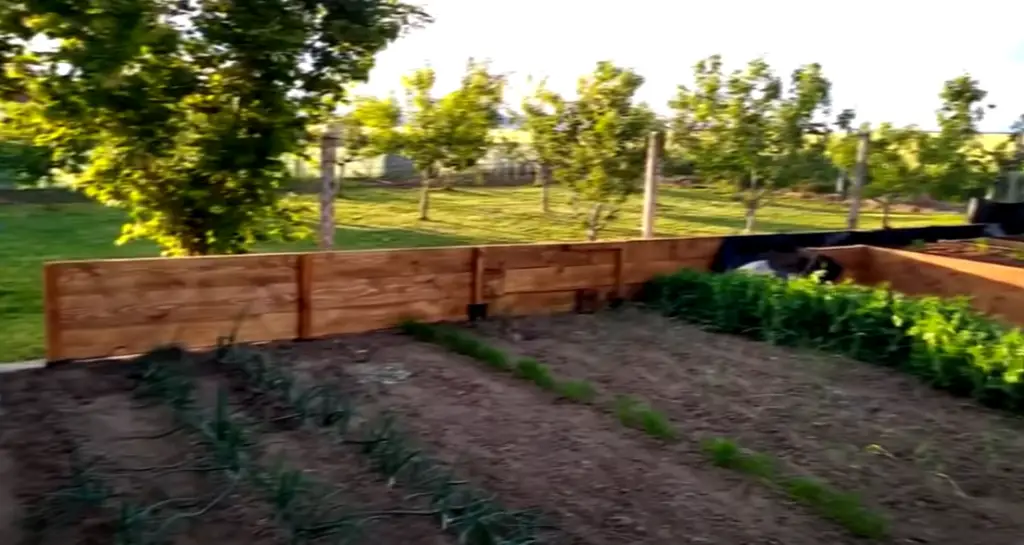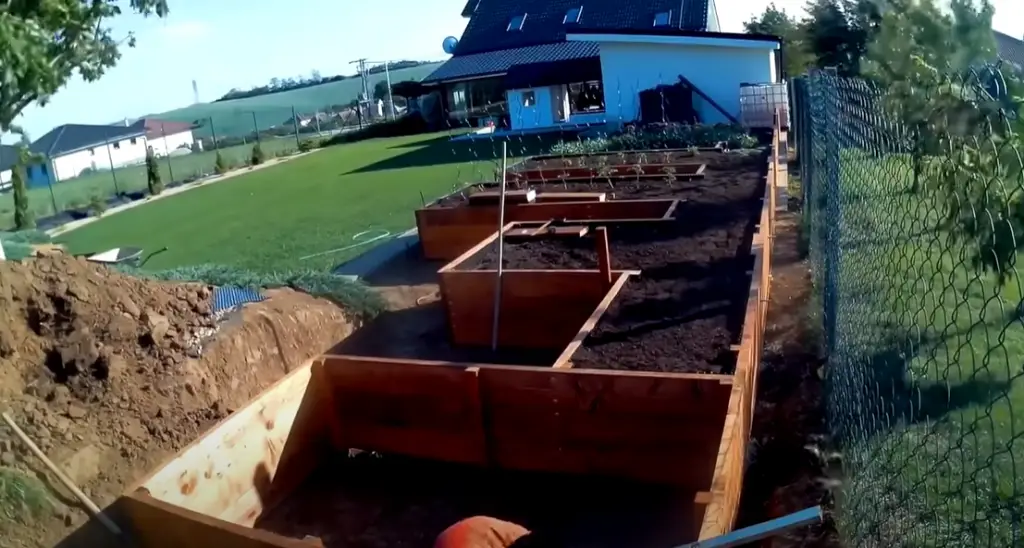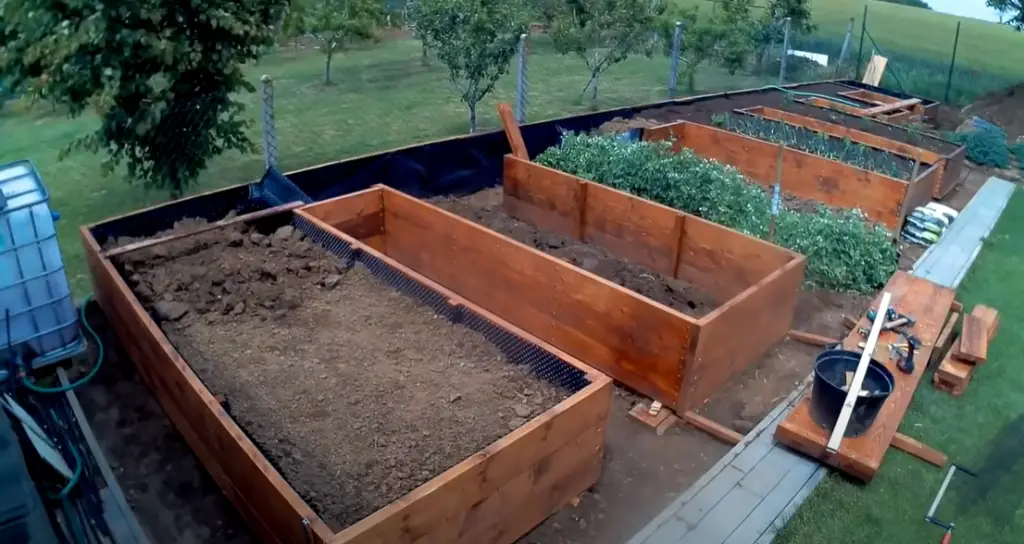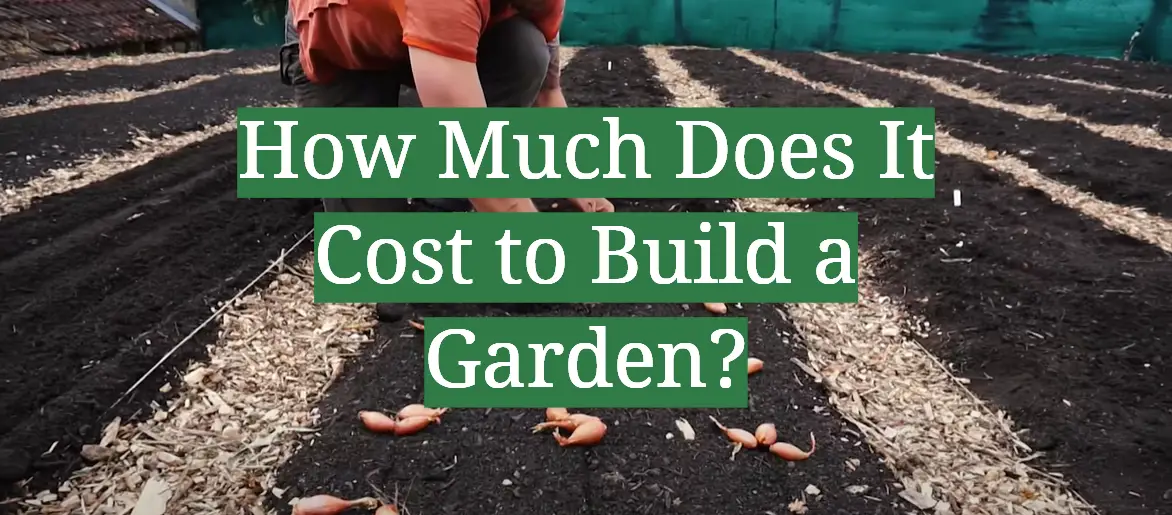Building a garden can be a daunting task. There are so many factors to consider: the size of the garden, the type of plants you want to grow, the type of soil you have…the list goes on and on! This comprehensive guide will break down all the costs associated with building a garden, from materials to labor. It will also give you tips on how to save money along the way! So, whether you’re a beginner or an experienced gardener, read on for all the information you need to know about building your dream garden.
Why do you need a garden on your property?
Gardening is a great way to beautify your property and add value to your home. A garden can transform a dull, barren landscape into a lush, vibrant sanctuary for you and your family. It can also provide enjoyment as you watch flowers bloom, fruits and vegetables grow, or simply enjoy the beauty of nature from the comfort of your backyard.
Gardening also has health benefits – research shows that it can reduce stress, improve mental clarity and creativity, and even help combat depression. Additionally, having a garden on your property provides environmental benefits such as improved air quality through oxygen production, decreased runoff due to water absorption by soil and plants, habitat creation for beneficial insects like bees or butterflies, erosion control through root systems of plants, and countless other benefits. Ultimately, having a garden on your property can give you an outdoor oasis to enjoy, add value to your home, and provide a lasting benefit to the environment.
Creating a wildlife garden is easy – just leave some open areas with native grasses or wildflowers and provide water sources such as bird baths, ponds, or fountains. You may also choose to add feeders for birds and other animals and plant trees, shrubs, and flowers to attract wildlife.

No matter what type of garden you choose, the benefits are well worth the effort. A garden can boost your property value while also providing a beautiful outdoor sanctuary for you and your family to enjoy. Plus, you will be helping the environment by reducing runoff, improving air quality, and creating valuable habitats for wildlife. So, why not get started today on creating your very own garden?
Types of home gardens
Many different types of home gardens can be used to create an oasis in any backyard. Here are some common types of home gardens:
- Vegetable Gardens – Growing vegetables at home is a great way to extend the growing season, get fresh ingredients for your favorite recipes, and reduce the cost of groceries. Vegetable gardens come in all shapes and sizes, from raised beds to kitchen containers, so there’s something for everyone.
- Herb Gardens – Fresh herbs can add amazing flavors to meals without a lot of work or expense. A herb garden can be as simple as one container on your windowsill or as elaborate as a large outdoor space with multiple plants that you care for over the entire growing season.
- Flower Gardens – Flowers are one of the best ways to make your yard look beautiful and inviting. From annuals to perennials, there are dozens of flowers that you can grow for cutting or display in your home garden.
- Fruit Trees – Growing fruit trees is a great way to get fresh, organic produce right at home. Many types of fruit trees require very little care and maintenance, so they are a great option for busy families who want to enjoy homegrown fruit without all the work.
- Water Gardens – If you have the space, water gardens can be a great addition to any backyard. From small fish ponds to elaborate koi ponds with waterfalls and streams, there’s something for everyone.
- Shade Gardens – If your yard has a lot of shade, then you can still have a beautiful home garden with the right plants. Hostas, ferns, and other shade-loving plants are perfect for those areas that get too much sun throughout the day.
- Wildlife Gardens – If you want to attract wildlife to your backyard, then a wildlife garden is the way to go. Whether it’s birds or butterflies, there are specific plants that will draw them in and give them a safe place to thrive [1].
Benefits of a home garden
Growing a home garden brings many benefits to both the individual and the environment. It can help individuals save money, eat healthier, reduce their environmental impact, and find joy in gardening.
One of the most obvious benefits of having a home garden is saving money on groceries. Home-grown fruits and vegetables tend to be much cheaper than those bought from a store, as there are no transportation or packaging costs involved. In addition to this, growing your food gives you control over what is being used on it. You get to choose how much fertilizer and pesticide you want to use, or if you’d rather go for an organic approach altogether.
Having a home garden also has environmental benefits. It reduces your carbon footprint by decreasing the transportation miles associated with getting conventional produce to market. Additionally, having a garden means more plants in the area, which helps improve air quality by absorbing pollutants from the atmosphere. Lastly, gardening can help conserve water since you are likely to be using less than what is used for large-scale agriculture operations.

Lastly, gardening can provide individuals with joy and satisfaction from seeing their hard work come to fruition. From planting a seed to harvesting ripe vegetables or fragrant flowers, there is something special about growing something yourself. It can also provide a great opportunity for bonding with family, as gardening together can be a fun and educational activity.
In conclusion, having a home garden provides many benefits both to individuals and the environment. From saving money to eating healthier and reducing your carbon footprint, there are plenty of reasons why you should consider starting your garden today [2]!
The cost of creating a garden
Garden design costs: hardscape vs softscape
When it comes to the cost of creating a garden, there are two main components: hardscape and softscape. Hardscape is the portion of the garden that consists of physical structures such as walls, steps, walkways, patios, driveways, and other durable elements. These materials tend to be more expensive but last a very long time with minimal maintenance. Softscapes refer to plants and other organic elements like soil and mulch which may require more frequent maintenance over time but can be replaced or refreshed relatively easily. For soft scapes, you may on average spend about $150-$200 for each square foot, while hardscapes can cost up to $400 or more per square foot.
The cost for hardscape will vary based on the size and type of material used; factors such as drainage, soil conditions, and access should also be taken into account when deciding what hardscape material to use. Softscape costs will depend on the type and number of plants used, as well as the labor involved in planting and maintaining them. In addition to these costs, any additional lighting or irrigation required should be taken into account before beginning construction.
Garden design costs: size isn’t everything
When creating a garden, the size of the space is only one factor to consider. If you want to create an impactful and visually appealing garden, it’s important to keep in mind other considerations such as design elements like color schemes, textures, and foliage types. These can all add up and affect your overall budget for creating a garden. Additionally, depending on how intricate or complex the project is, hiring a professional designer may be necessary which can also increase costs.
Designing a garden for a budget
It is possible to create a beautiful garden on a budget. You may want to start by designing the basic structure of your garden first, and then begin adding plants and decorative elements as you go. Also, don’t be afraid to get creative – there are many DIY options for creating an inviting outdoor space that can help keep costs down. Researching plants that are native to your area can also help save money on water bills over time, while still providing a stunning backdrop for your garden. Overall, whether you plan on hiring professionals or doing the work yourself, it’s important to take the time to consider all of your costs before starting any project [3].

Ways to save money on gardening
Consider the following tips to save money on gardening:
- Start small and gradually expand your garden over time. Take one step at a time and make sure you have the necessary tools, supplies, and resources before you get started.
- Utilize existing plants rather than buy new ones. If possible, share plants with friends or family members so that everyone can benefit from the bounty of their gardens.
- Plant native species when possible as they are better adapted to local conditions and require less maintenance over time.
- Use seeds instead of starter plants for annuals such as flowers or vegetables as this will cost much less in the long run.
- Consider using compost as fertilizer instead of chemical-based products. Compost can be made from kitchen scraps, lawn clippings, and other organic materials.
- Invest in a rain barrel to collect rainwater for use in the garden or lawn. This will save you money on city water bills and is better for the environment as well.
- Use mulch to conserve moisture and control weeds in your garden beds. Mulching also helps reduce the need for additional fertilizer which can add up quickly over time.
- Reuse materials such as pots, trays, and other containers that would otherwise end up in landfills by repurposing them in your garden instead of buying new ones each year.
- Shop around when purchasing supplies or equipment to find the best deals available.
- Be patient and don’t be afraid to do things yourself as this can help save money on labor costs associated with gardening.
- Take advantage of free resources such as libraries, extension services, or online sources for gardening advice or to learn about new plants and techniques.
- Finally, have fun and enjoy the process – you may be surprised at how much satisfaction you can get from a successful garden without breaking the bank [4]!

How to maintain a home garden?
Maintaining a home garden can be a fun and rewarding experience. Here are some tips to help you keep your garden healthy and thriving:
- Water regularly and deeply – This will encourage deep roots that help the plants stay hydrated and ensure they’re getting all the nutrients they need to stay healthy.
- Prune regularly – Regular pruning helps promote bushier plants with more flowers or fruits, so it’s important to trim back any dead or dying branches periodically.
- Fertilize appropriately – Different plants require different amounts of fertilizer, so make sure you understand exactly how much is needed for each type in your garden. If in doubt, always use less than the recommended amount.
- Use pest control – Pests can cause a lot of damage to your plants, so make sure to invest in some form of pest control if you have an issue with unwanted bugs or critters.
- Plant in containers – If you’re short on space or don’t have access to soil that is suitable for gardening, planting in containers is a great way to keep your garden looking fresh and healthy.
- Deadhead flowers – This will help encourage new growth and prevent your plants from producing too many seeds, which can sap their energy levels and prevent them from flowering again next year.
- Monitor the weather – Extreme temperatures can be damaging to plants, so make sure you pay attention to the weather and provide any additional protection needed depending on the climate in your area.
- Mulch – Adding mulch helps keep moisture in and weeds out, which will help give your plants a better chance of survival. Follow these tips to ensure that your home garden is healthy and thriving all year round!

FAQ
How much does it cost to make your garden?
The cost of making your garden depends on the size of the garden and the materials you choose to use. Generally, a small vegetable or flower garden can be made for around $100 to $200 in materials, whereas larger gardens with more elaborate features may cost up to several thousand dollars. Labor costs will also factor into the total cost. It is best to work with a professional landscaper to get an accurate estimate of how much it will cost to create your dream garden.
Where can I find gardening supplies?
Gardening supplies can be found in many places, including big-box hardware stores, home improvement centers, nurseries, and specialty gardening stores. You can also purchase items online from various vendors that specialize in gardening supplies.
What are the best plants for my garden?
The best plants for your garden depend on your climate, soil type, and the amount of sunlight available in your yard. Different types of flowers, vegetables, trees, and shrubs all thrive in different climates. Talk to a local nursery or master gardener to get advice on which plants will do well in your area.
How often should I water my garden?
Watering frequency varies depending on weather conditions and the type of plant. Generally speaking, it is a good idea to water deeply once or twice per week when there is no rainfall. Make sure that you are only providing enough moisture for the roots of the plants – overwatering can be just as damaging as underwatering.
What types of fertilizers should I use?
Different plants have different fertilizer needs, so it is important to do your research and choose the best type for each plant. For example, some plants require more nitrogen-rich fertilizers, while others need more phosphorus or potassium. If you are unsure about which fertilizer to use, consult a local nursery or expert for advice.
How much does it cost to build a garden in the UK?
The cost of building a garden in the UK will depend on the size and complexity of the project, as well as the materials and labor costs. Generally, a basic garden can be created for around £500 to £1,000 in materials. More complex gardens with more intricate features may cost up to several thousand pounds. It is best to get an accurate estimate from a professional landscaper before starting any major gardening projects.
What are some tips for creating an attractive garden?
There are lots of ways to make your garden look more attractive. Start by choosing plants that suit your climate and soil type – this will ensure that they thrive in your yard all year round. Then add color and texture with various flowering plants, evergreens, and shrubs. You can also add visual interest with garden art, water features, and raised beds. Finally, keep the garden neat by weeding regularly and deadheading flowers.
How do I protect my plants from pests?
The best way to protect your plants from pests is to practice integrated pest management (IPM). IPM involves using a combination of techniques including physical barriers, cultural controls such as companion planting and crop rotation, biological control agents like beneficial insects, and chemical pesticides if necessary. Keeping your garden free of weeds also helps reduce pest problems. Additionally, avoid over-fertilizing your plants – this can make them more attractive to pests.

Can I grow vegetables in containers?
Yes, you can grow a variety of vegetables in containers. Tomatoes, peppers, eggplants, and beans are all good choices for container gardening. Be sure to use a high-quality soil mix and choose containers that are large enough for the plants to have room to grow. Additionally, make sure to water regularly and fertilize every few weeks. With proper care, you should be able to enjoy fresh vegetables from your garden all season long!
How much does it cost to build a raised garden bed?
The cost of building a raised garden bed will depend on how large it is and the type of materials used. Generally speaking, you can expect to spend between 50-100 dollars for a small bed made out of wood or composite materials. For larger beds, you may need to budget up to several hundred pounds. Additionally, keep in mind that there are costs associated with soil and plants as well.
How much can you plant in a 4×8 garden?
It depends on the type of plants you are planting, but a 4×8 garden can accommodate a variety of vegetables and herbs. Generally, you can plant up to 16 tomato plants, or 8 pepper plants in this space. You could also grow several rows of lettuce or other leafy greens such as kale or chard. Additionally, if you are looking to add some color and texture to your garden, you could include flowers like sunflowers or zinnias in the mix.
What type of soil should I use for my garden?
The best type of soil to use for your garden will depend on what types of plants you are growing. For most vegetables and flowers, it is best to use a well-draining potting mix or soil mix that is amended with compost. For container gardens, you may want to use a lightweight, soilless potting mix. Before planting, make sure to test the soil for its pH level and adjust accordingly. Additionally, consider adding a slow-release fertilizer for added nutrients. For best results, it is always important to select the proper type of fertilizer and apply it according to the manufacturer’s instructions.
Useful Video: How To Start A New Garden (From Start to Finish)
Conclusion
Building a garden is a great way to improve the environment and add beauty to your outdoor space. Not only can it increase the value of your home, but it also has a host of other benefits, such as providing a place for wildlife to thrive, increasing oxygen levels in the atmosphere, reducing air temperatures in urban areas, and creating an overall healthier environment. What’s more, once you have successfully built your garden, you will be able to enjoy its beauty for years to come. With careful planning and dedication, building a garden is an easy task that will bring more life into your backyard. So gather up some supplies and start planting!
References:
- https://timesofindia.indiatimes.com/life-style/home-garden/types-of-garden-in-your-home/articleshow/
- https://homeguides.sfgate.com/advantages-home-gardens-39103.html
- https://rigdensaunders.com/how-much-does-it-cost-to-build-a-garden/
- https://www.gardenersworld.com/how-to/grow-plants/20-money-saving-tips-for-gardeners/










Leave a Reply
View Comments